You can tell a lot about a car’s priorities from its seats. Jeep Wrangler seats are hard-wearing, but comfortable enough for those lifestyle buyers. Subaru BRZ seats will hold you tight in a corner, but kill your lower back on long drives. The seats on the new Civic Si? They’re supremely comfortable, but will still keep you firmly planted as you dive into a sweeping right-hander.
For a daily commuter that’s likely to see some spirited driving, they’re an almost perfect compromise — blending comfort and capability such that neither is sacrificed too heavily for the other. Convenient, then, that the rest of the car feels the same way.
Full disclosure: Honda brought me out to Los Angeles to test the new Civic Si on some canyon roads and the Pacific Coast Highway. They paid for lodging, airfare, and meals, including one lunch at Neptune’s Net. I did not get the shrimp.
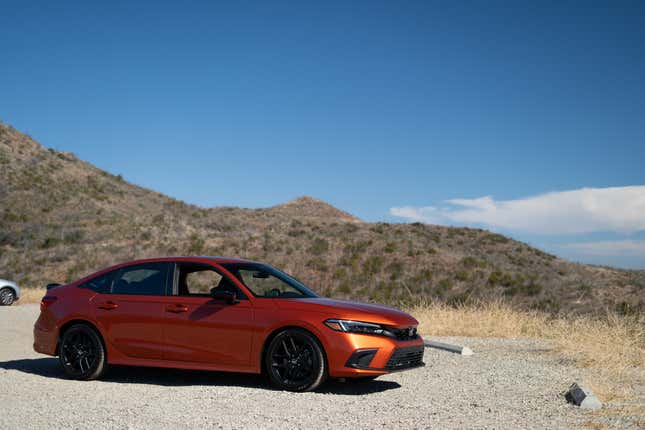
What’s New About The 2022 Civic Si?
A lot, actually. The new Si rides on the eleventh-generation Civic chassis, which provides a longer wheelbase and overall body compared to the 2020 Si. That means slightly more passenger room than the old car, and a longer hood relative to the rest of the car. It also means updated looks that are more smoothed-over and toned-down than the Gundam-styled previous generation.
What isn’t different, however, is the drivetrain. The same 1.5-liter turbocharged four cylinder, the same six-speed transmission with a limited-slip differential. The engine’s tuning has been slightly adjusted to broaden the powerband, and the flywheel has been changed out for a lightened, single-mass setup, but beyond that it’s the same old formula.
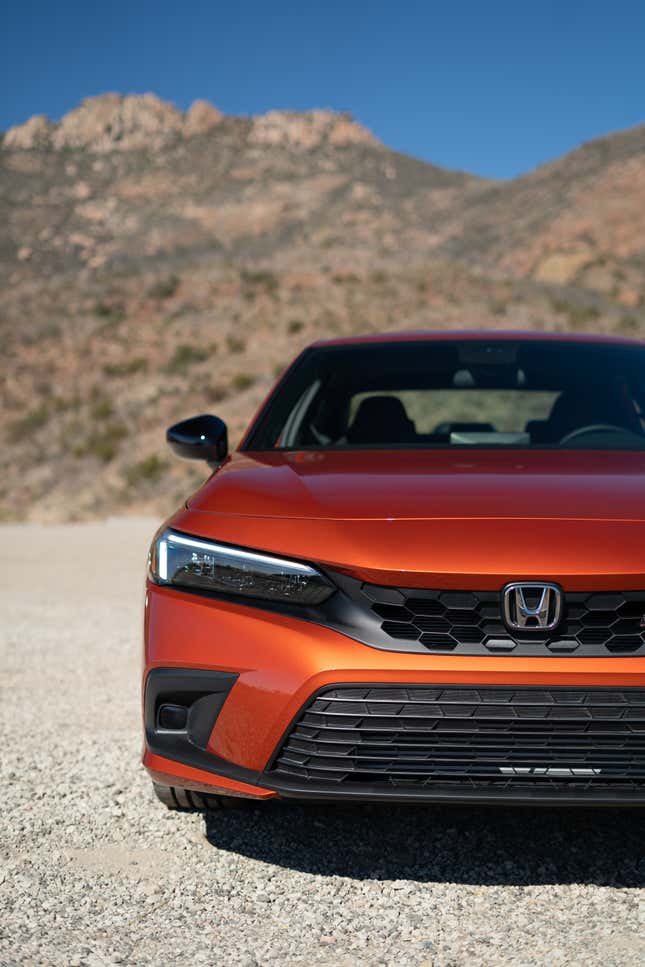
What Are The Specs?
The Civic Si isn’t really about specs, but since you asked so nicely I’ll give them to you anyway. The new Si puts down 200 horsepower at 6,000 rpm, and 192 ft-lbs of torque starting at 1,800 rpm. It tips the scales at 2,906 lbs, 60.3% of which are over the front axle.
The online configurator for the Si will show you two trim levels, but don’t be fooled — it’s really only one. The base Si gets a Bose audio system, a nine-inch touchscreen, a hybrid digital dash, and wireless CarPlay/Android Audio. The HPT trim adds Goodyear Eagle F1 Asymmetric tires, wrapped around the same 18-inch satin-black wheels as the base.
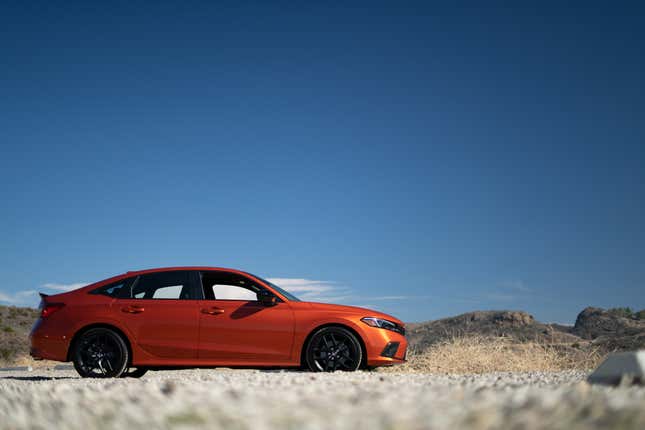
How Does It Look?
To quote everyone’s favorite non-line from “Sweet Caroline”: “So good, so good, so good.” The previous-gen Civic’s looks grew on me, especially in Type R trim, but the eleventh-generation car looked great from the first reveal. The front end borrows its grilles from the Civic hatchback, rather than the other sedans, meaning that weird body line bisecting the Honda badge is gone here.
The long hood meets shockingly thin A-pillars, and the windows flow down to a CT5-esque kick-up in the rear glass. The belt lines are modern-car high, for the Hot Wheels look that’s so popular now, and the small split spoiler in the rear nicely accentuates the trunk. The Si-exclusive orange color is incredible in person, and if you buy one of these in any other shade I’m going to show up at your house and we’ll have a long talk about who did this to you and why you hate fun.
I also want to shout out a couple nitpicks here, one bad and one good. The bad: Honda will tell you that these wheels are matte black, which is a terrible color for pretty much any part of a car. They’re wrong, the wheels are satin black, which is better. The good one is the flat section around the wheel wells that all modern cars have. On the Civic, they’re noticeably slightly concave — it’s a cool touch, one that’s unique and stands out in a parking lot.

How Does It Drive?
Better than an economy sedan has any right or reason to. The engine package is far more interesting than the spec sheet would suggest, lively and responsive, though admittedly less rewarding to wring out than the Honda faithful may want. For newcomers to the Cult of VTEC, however, the engine is more forgiving — the low-end torque lets you miss a downshift and still have fun. Plus, it gives the Si just enough torque steer to keep things interesting.
I know turbochargers on performance Hondas are still a sticking point for traditionalists, but the Si’s makes for a fantastic experience across senses. Sure, there’s the sight and touch of speed and acceleration, but the sound alone is worth the drive. There are no wide-open wastegates or backfeeding sututu noises, but the induction whistle brings back fond memories of turbocharged days gone by — a little less insulated, a bit more raw.
After a canyon run, though, expect the smell of brakes.

That rawness carries over to the suspension. With proper braking (something I admittedly managed by luck more often than skill) the Civic dives into corners with an immediacy that no four-door family car should be able to pull off. Honda brags that the Civic has the longest wheelbase in its class (107.7 inches), and you can definitely feel it — the Si never cosplays a Miata. But for a car with usable back seats (no, “usable for a backpack” doesn’t count, BRZ owners), you’re unlikely to find a more playful-yet-confidence-inspiring setup. At least, not for under thirty grand.
Does it understeer at the limit? Of course! It’s a front-wheel-drive economy car. But, to those disappointed, I’ll say two things: First, the loss of traction is extremely progressive. The Civic will warn you long before it actually starts to run wide, and it can easily be reined in. Second, you probably shouldn’t be driving anywhere close to this car’s limits on public roads. An autocross or track day situation is different, obviously, but the limits of the law are far lower than the limits of the Si’s capability. Don’t go to jail just to try and eke some understeer out of it.
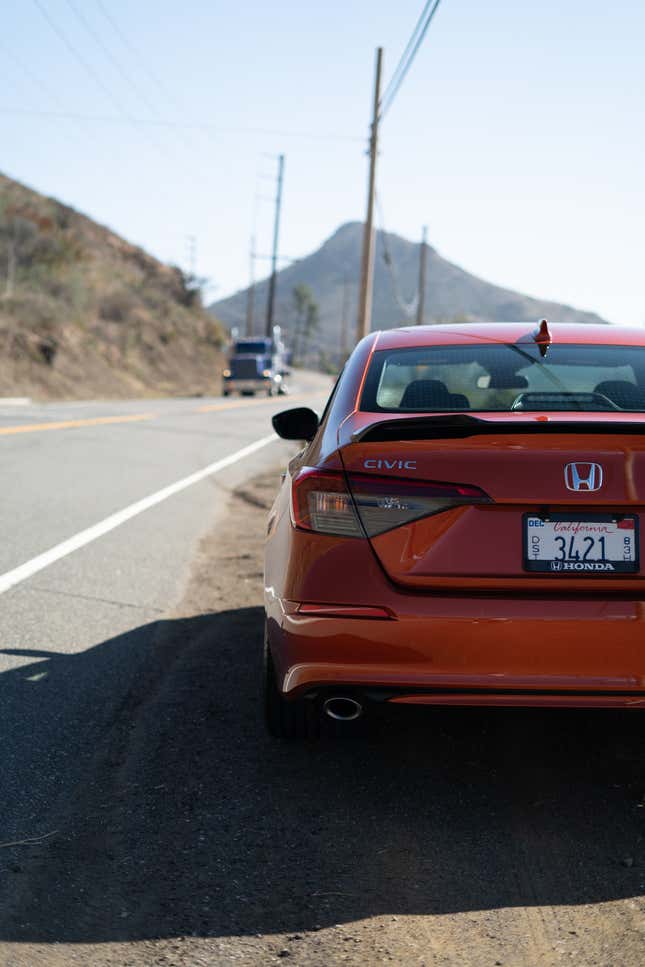
That suspension may punch above its weight in the twisties, but it does start to show its price point on imperfectly-paved flat roads. Without the distraction of lateral Gs, the budget components do start to bounce and jostle a bit. It’s by no means uncomfortable, but it’s likely less comfortable than a car dead-set on smoothness. The tradeoff, though, is absolutely worth it.
Everyone’s big question, judging by your comments, is about the rev hang. For the uninitiated, rev hang is when you take your foot off the gas, press in the clutch, and it takes a second before your RPMs start to drop. It’s annoying when shifting quickly, like you might in a performance car. I’ll bear some bad news: the rev hang is still there. It’s been improved, likely due to the lighter flywheel, but it’s not gone for good. Fortunately, the Si now borrows its big brother’s rev-match system. That too is imperfect, but it mitigates the worst of the rev hang.
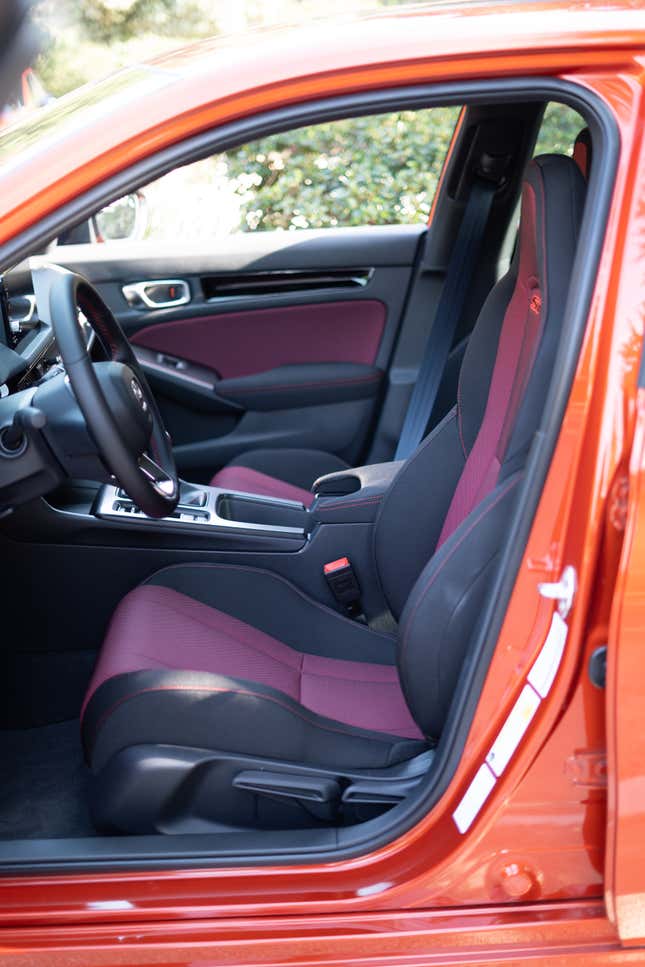
How’s The Interior?
If you want a Lexus, you’ve clicked the wrong article. Maybe wait until the new Integra comes out. If you’re looking for something completely barebones, though, you’re also in the wrong place. The Si is comfortable, well laid-out, and has all the tech you want — without the bloat.
Everything in the Civic’s interior is exactly where you expect it to be. There are physical knobs and buttons for things like climate and volume, and the steering wheel controls are thoughtfully laid out. The infotainment screen is prominent enough to be visible without fully turning your head away from the road, but never intrusive while driving. And the seats, my god, the seats. My high watermark for a comfortable performance driver’s seat is still the Civic Type R, but the Si seats are incredible for the price point. I don’t personally love their height, I wish driver’s seat was just a couple inches lower, but this seems to be where buyers in this segment are comfortable — the WRX is the same way.

The Si’s interior is reasonably quiet, though the sound from the optional Goodyear tires definitely makes itself known. Luckily, it can be drowned out by the beautiful Bose stereo. The lows are just the slightest bit muddy, but the system as a whole is far clearer than you’d expect in a car at this price point. Especially one where so much of the budget went to performance.
That performance meets the interior in one key area: the manual shifter. Honda reduced the throw from the older car, and it’s almost too notchy here. My tester was very low mileage, and likely still had room to break in, but each gear grabbed the shifter and didn’t always want to let go. Of course, that’s only something you notice in a car with gear ratios as good as the Honda — with short gearing down low (but tall gears in fifth and sixth for highway fuel economy), you’ll find yourself shifting constantly on tight roads to keep the engine near that 6,000-rpm peak.
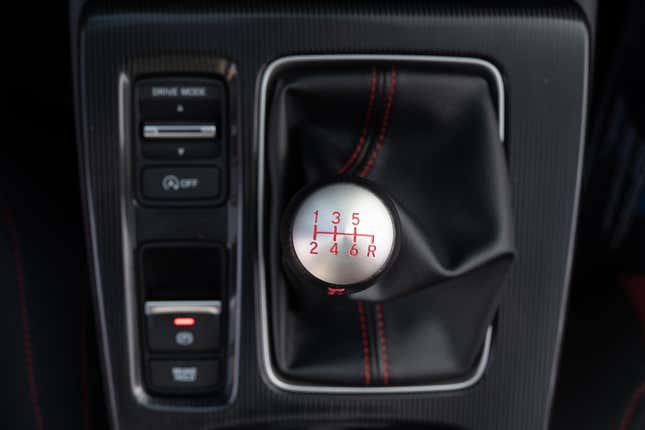
Final Thoughts
The Civic Si is inherently a compromise. For those looking to take the kids to school in only the finest comfort and luxury, this is not the car for you. To any hard-edged track rats, whittling their lap times down by tenths at a time, do not buy this car. To anyone else, anyone who needs to get from point A to point B and has the slightest interest in the fun of driving: You will not regret buying a new Civic Si.
You won’t regret it because the Si is the good compromise. It’s so many ands with very few buts: It has short, fun gearing and tall highway cruiser gears. It has a broad, practical powerband and entertaining power delivery. The seats are bolstered and comfortable. It’s nimble in the corners and has a comfortable, spacious interior. Sure, the suspension is great in the corners but a bit bumpy on the highway, but the ands win the day by a mile.
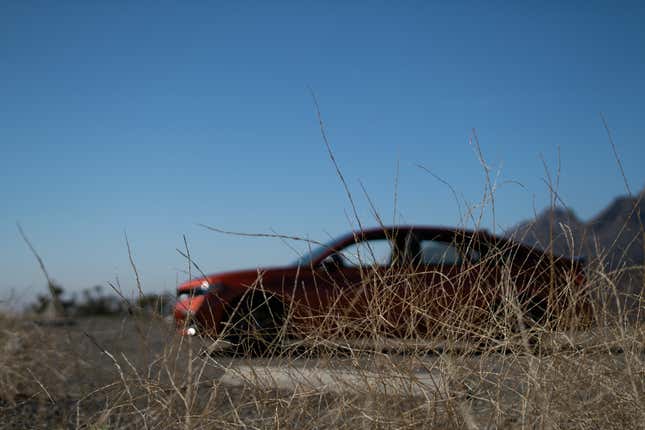
I enjoyed the outgoing Si, but the new car is truly a massive improvement. Everything’s been tinkered with, refined, improved, perfected. The driving experience here is more akin to the old Type R. The R had a goading demeanor, it jabbed at your side and promised that you could go faster, brake later, carry more speed through the corner. The new Si isn’t quite as frenetic, but much of that character remains — the Si wants to be driven hard, and it’s got the hardware to back it up. For those decrying the lack of connection in modern cars, here you go. This is what you’ve been looking for.
That connection lets the car really communicate with the driver. It’s a car I could picture teaching me more about weight transfer, braking zones, and grip management. There’s no on-off switch for traction, no harsh penalties for staying in the wrong gear through a corner. The Si lets you know you’ve made a mistake, but you aren’t punished for it.
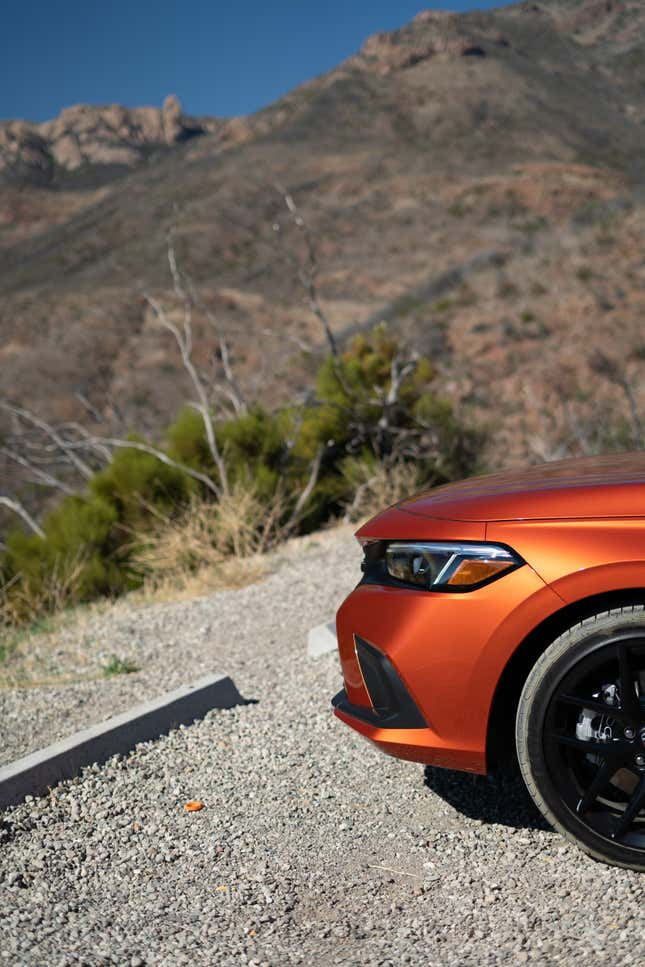
Of course, the elephant in the room is the Type R. With just a few teases to work from, no one’s going to be able to predict exactly how the new Type R will drive (yes, including your friend whose “uncle works at Honda” and swears that the new Type R will be a thousand-horsepower hybrid coupe). But based on the prior car, and the advancements Honda made between the outgoing and incoming Si models, the Type R is likely to be something special.
Unfortunately, the pricing is likely to reflect that. The old R was a more than ten thousand dollar leap over the old Si. That may be worth it for the Honda faithful, the track rats, and those willing to spend everything to eke out the last bits of performance. But the Si’s limits are already far above those of your local police department, and the Type R’s will be far above that. For most people, that extra money goes to performance they’ll never get to see.
Go find an Si at a dealer. Sit down in those front seats. If you like the bolsters, buy the car. If you think they’re comfortable, buy the car. If you just think they look cool, buy the car. If none of those three apply to you, take it for a test drive. I promise you’ll want one after that.